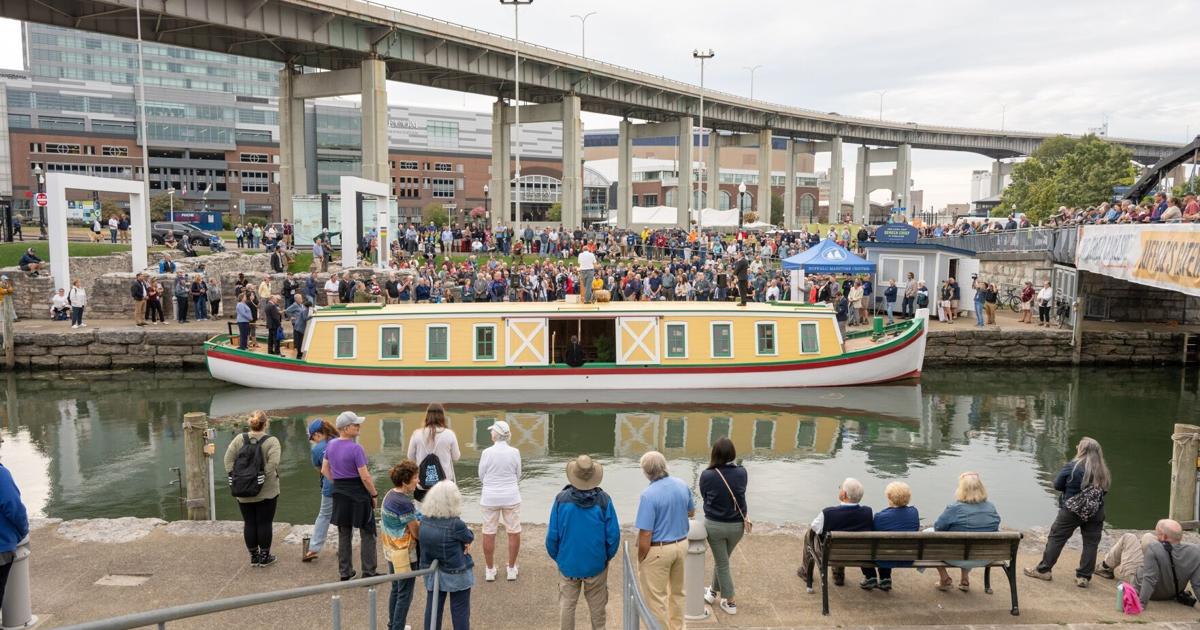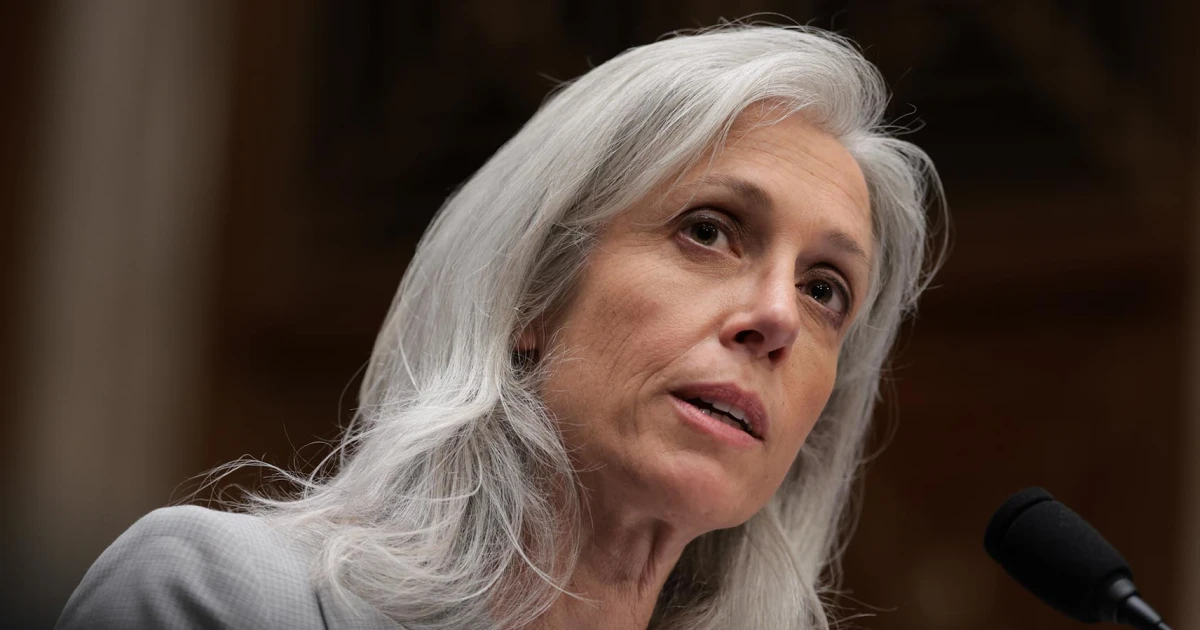
The handcrafted replica of the Erie Canal boat Seneca Chief left Canalside on Wednesday to re-create a historic journey along the Erie Canal.
The 33-day Bicentennial Voyage commemorates Governor DeWitt Clinton’s 1825 trip from Buffalo to New York Harbor. The vessel will stop at 28 ports, arriving at Pier 26 in New York City on Oct. 26 – exactly 200 years after the original voyage began.
Many gathered at Canalside’s commercial slip to watch Wednesday’s launch. The Buffalo Maritime Center led the construction of the 44-ton, 73-foot-long replica which was built by nearly 200 volunteers and students, between October 2020 and June 2024 while stationed inside the Longshed at Canalside. The community boatbuilding effort is the largest project of its kind, representing new history made and inspired by the canal’s maritime legacy.
“[It’s] hard not get teary eyed about this whole thing. It’s been a long journey,” said John Montague, founder of the Buffalo Maritime Center.
Brian Trzeciak, executive director of the Buffalo Maritime Center, called the Seneca Chief a “vessel of education.” While docked at each port, the Seneca Chief will serve as a floating museum, allowing visitors to come aboard and view a curated exhibit that highlights the Erie Canal’s cultural, economic and environmental impact as well as historic figures and communities that shaped its lasting influence.
Listen now and subscribe: Apple Podcasts | Spotify | RSS Feed | SoundStack | All Of Our Podcasts
Throughout the journey, Eastern White Pine trees, referred to as the Great Tree of Peace in Haudenosaunee culture, will be planted at each port stop as a tribute to the contributions of Indigenous communities and a symbol of commitment to preserving the environment.
As a nod to Clinton, who led the original Wedding of the Waters in 1825, the Voyage will also feature a ceremonial Gathering of the Waters, a collection of water added to a barrel from every section of the canal, which will be used to water the final tree planted in New York City in October.
Although it was a joyous celebration it was not without remembrance of those canal’s original construction hurt.
“The Erie Canal brought progress and opportunity, but it also brought displacement and grief. For some, those harder truths are treated as a footnote, but for us, they are central. I believe that real celebration has meaning only when it’s balanced with remembrance. To honor achievement without acknowledging what was lost would be to tell only part of the story,” said Melissa Parker Leonard, and Indigenous scholar.
“We can’t change the past, but we can in how we interrelate with it,” said Joe Stahlman, Indigenous scholar.
Get local news delivered to your inbox!
Subscribe to our Daily Headlines newsletter.
* I understand and agree that registration on or use of this site constitutes agreement to its user agreement and privacy policy.
Jamal Harris
News Staff Reporter
Get email notifications on {{subject}} daily!
Your notification has been saved.
There was a problem saving your notification.
{{description}}
Email notifications are only sent once a day, and only if there are new matching items.
Followed notifications
Please log in to use this feature
Log In
Don’t have an account? Sign Up Today



